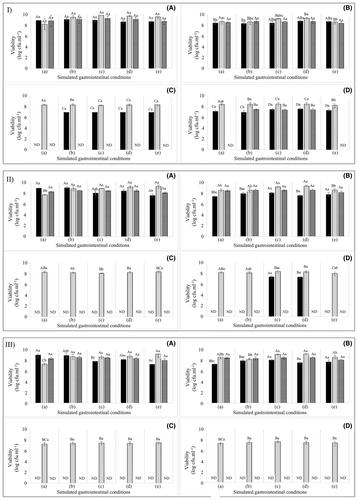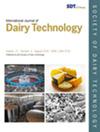Encapsulation of Lactobacillus spp. using vibratory extrusion technology and dairy by-products as encapsulating agents: Promising microparticles for the probiotics industry
Abstract
Background
Microencapsulation of probiotic microorganisms is a key strategy to preserve their viability during processing, storage and gastrointestinal transit. Among the available techniques, vibratory extrusion has shown great promise in enhancing probiotic survival under adverse conditions. Traditionally, maize starch and alginate have been widely used as encapsulating materials due to their effectiveness and availability. However, the incorporation of dairy by-products as alternative encapsulating agents stands out for its potential to improve encapsulation efficiency, confer additional functional properties and promote sustainability by valorising industrial waste.
Aims
This study aimed to evaluate the microencapsulation of Lacticaseibacillus paracasei ML33, Lactiplantibacillus pentosus ML82 and Lactiplantibacillus plantarum ATCC8014 via ionic gelation using different dairy by-products.
Methods
The microencapsulation was performed using vibratory extrusion technology employing bovine and buffalo cheese whey, whey permeate and ricotta whey combined with starch and sodium alginate. The resulting microparticles were evaluated for encapsulating efficiency, morphology and probiotic viability during storage, under simulated gastrointestinal conditions and under osmotic stress.
Major findings
All encapsulated strains exhibited an initial viability of log 8.8 colony-forming units (cfu)/mL. On the first day of storage, probiotic survival under simulated gastrointestinal conditions was 94.44 and 96.01% for bovine and buffalo cheese whey matrices, respectively, highlighting their superior protective capacity. After 60 days of storage at 4°C, the encapsulated microorganisms remained viable (>log 7 cfu/mL), except for L. pentosus ML82 encapsulated with whey permeate and ricotta whey. Bovine cheese whey was the most effective encapsulating material across all strains tested.
Scientific implications
These findings demonstrate that dairy by-products, in combination with starch and sodium alginate, provide effective protection for probiotics under adverse conditions and represent promising encapsulating matrices.


 求助内容:
求助内容: 应助结果提醒方式:
应助结果提醒方式:


